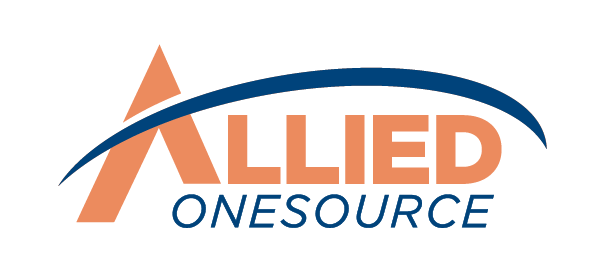Avoiding Production Delays: The 6 Smartest Hiring Strategies for Manufacturing Companies During Peak Demand
Holiday season hits and consumer goods orders triple overnight. Your automotive parts team faces model year changeover deadlines. Light industrial clients demand faster fulfillment as shipping peaks approach. These scenarios share one common thread: your production capacity hinges on having the right workforce ready when demand surges.
The gap between needing workers and finding them creates a cascade of problems. Production lines slow down. Quality standards slip under pressure. Deadlines are missed. Customers grow frustrated. What starts as a small staffing shortage snowballs into lost revenue and damaged relationships. The solution isn't just hiring faster but hiring smarter before the rush begins.
The good news? You can prevent these bottlenecks.
Stop Production Delays Before They Start: 6 Hiring Strategies
With the right hiring strategies, your shop floor can stay productive and efficient, even when demand surges. Let’s walk through six of the smartest hiring strategies manufacturing companies like yours can put in place to avoid scrambling when it counts most.
1. Don’t Just React: Forecast Your Labor Needs Like You Forecast Production
You already use past sales data and customer contracts to forecast production. But what about labor? Too often, hiring is reactive. Managers wait until production lines are short-staffed to post jobs or call in a staffing partner—and by then, it’s too late.
Instead, tie your hiring schedule to your production forecast. Look at the volume spikes from last year, upcoming contracts, and seasonal trends. If you know Q4 always brings a surge in orders, you should be recruiting and onboarding in Q3. That head start gives you time to build in training, improve retention, and avoid rushed decisions.
Manufacturing job openings remain stubbornly high, with hundreds of thousands of roles unfilled each month.1 If you’re not ahead of the curve, you’re competing for talent when everyone else is, and that makes it even harder to fill roles in time.
Forecasting labor needs isn’t just proactive, it’s a key element in preventing delays before they start.
2. Build Your Talent Pipeline During Slow Periods
Speed matters when demand spikes, but rushing through hiring decisions creates bigger problems. Poorly vetted workers can compromise quality control, create safety issues, or miss production quotas. The smart approach treats your workforce pipeline like inventory management. You wouldn't wait until you're out of critical parts to reorder, so why treat talent acquisition differently?
Start building your bench during slower periods. Reconnect with past high-performing temporary workers who know your processes. Pre-screen candidates for specific roles and keep their paperwork ready. Maintain relationships with quality workers even when you don't need them immediately. When demand surges, you're not scrambling to find people—you're activating relationships you've already built. This approach gives you speed without sacrificing the vetting process that protects your operations.
Read More: Avoiding ‘Wrong Fit’ Hires During a Sprint Hiring Surge: How to Maintain Quality While Speeding Up
3. Set Up Temporary Workers to Succeed From Day One
Most companies treat temporary worker onboarding as an afterthought, then wonder why productivity suffers. Successful integration requires the same systematic approach you use for permanent hires.
Develop standardized training materials that cover your specific processes, safety protocols, and quality standards. Create simple visual guides and checklists that new workers can reference without stopping production.
Assign each temporary worker a buddy from your existing team who can answer questions and provide real-time guidance. Structure their first week with clear daily goals and frequent check-ins to ensure they're meeting expectations. This upfront investment pays off when temporary workers contribute meaningfully to your operations instead of creating additional training burden for your permanent staff.
Read More: The Post-Hire Dropout: How to Avoid Turnover in Critical Roles After a Hiring Surge
4. Use Hiring Automation Tools to Speed Up Time-to-Fill Without Sacrificing Fit
Your next great hire might already be waiting. But if you take too long to reach out, they’ll move on. When workers are in high demand, slow hiring costs you talent. However, automation helps speed things up. It can screen for the right skills, schedule interviews, and send reminders, so candidates remain engaged and don’t slip through the cracks.
But this doesn’t mean removing the human touch. It’s about automating steps that tend to slow you down, like:
- Resume filtering
- Interview scheduling
- Onboarding documentation
- Communication templates
These tools help you stay fast, accurate, and competitive. That kind of responsiveness matters, especially when you're managing multiple roles or last-minute requests. It can also prevent small delays from snowballing into costly project launch delays.
Read More: 10 Essential Workplace Safety Tips for Everyday Manufacturing Operations
5. Know Which Roles to Fill Temporarily vs. Permanently
Not every position should be filled the same way during peak demand. Strategic role planning helps you deploy resources efficiently and avoid overstaffing when demand normalizes. Consider these factors when deciding on temporary versus permanent placements:
- Temporary roles: General labor, packaging, basic quality checks, material handling, and seasonal production increases
- Permanent roles: Machine operators requiring certification, supervisory positions, specialized technical roles, and safety-critical positions
- Hybrid approach: Entry-level positions that could convert to permanent based on performance and business needs
Focus temporary hiring on roles where workers can contribute immediately without extensive training or certification requirements. Reserve permanent hiring for positions that require deep knowledge of your processes or where turnover creates significant costs.
Read More: How to Sustain Productivity During a High-Volume Hiring Surge in Industrial Roles
6. Track the Right Metrics to Optimize Your Staffing Strategy
Measuring the right data helps you refine your approach and identify what's working versus what's wasting time and money. Track time-to-productivity for new hires by role type - how long does it take a temporary worker to reach acceptable output levels compared to permanent staff? Monitor quality metrics during peak periods to ensure your staffing strategy isn't compromising standards.
Evaluate conversion rates from temporary to permanent positions and identify which temporary workers are worth retaining long-term. Calculate the cost per hire for different sourcing methods to focus your recruiting budget on the most effective channels. These metrics help you make data-driven decisions about staffing strategies rather than relying on gut feelings when planning for the next peak season.
Partner with a Staffing Firm that Understands Manufacturing Cycles.
Not all staffing partners are the same. When you're under pressure and lead times are tight, you need someone who understands your industry, your busy seasons, and the kind of workers who will actually succeed on your floor.
But surges in demand don’t have to mean chaos. With the right hiring strategies, your team can stay productive, flexible, and focused on delivering—not scrambling to catch up.
At Allied OneSource, we focus on hiring for manufacturing roles—from entry-level machine operators to experienced team leads. We don’t just fill positions. We help you plan ahead so you're ready when demand picks up.
Working with the right partner can give you:
- Faster access to qualified candidates
- Workers who are trained and ready to perform
- Support during high-volume periods without the extra overhead
- A hiring strategy built around your actual workflow
- Better worker fit and lower turnover
- Local candidates with relevant experience
- Support for onboarding and performance monitoring
In short, you get a hiring partner who acts like an extension of your operations team—not just a vendor. At Allied OneSource, we help manufacturing companies build hiring systems that prevent production delays and keep operations strong, no matter the season.
Ready to get ahead of the next rush? Let’s talk.











